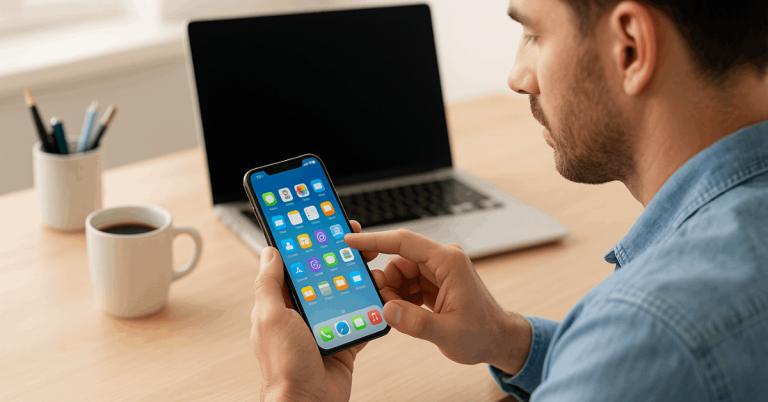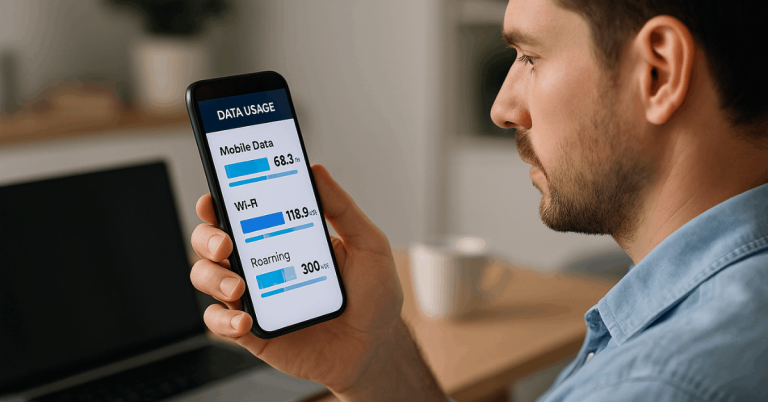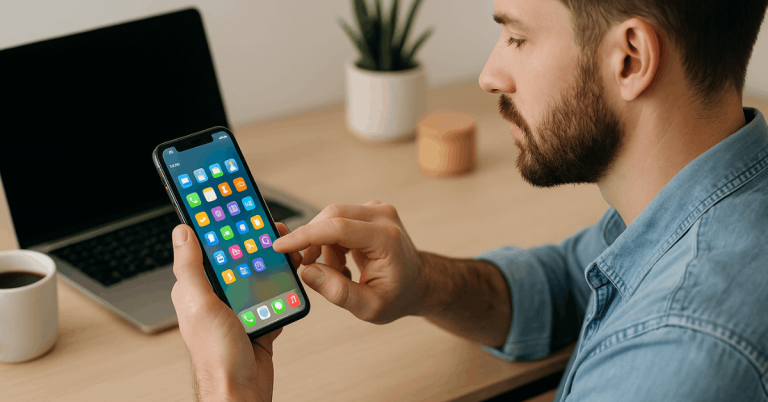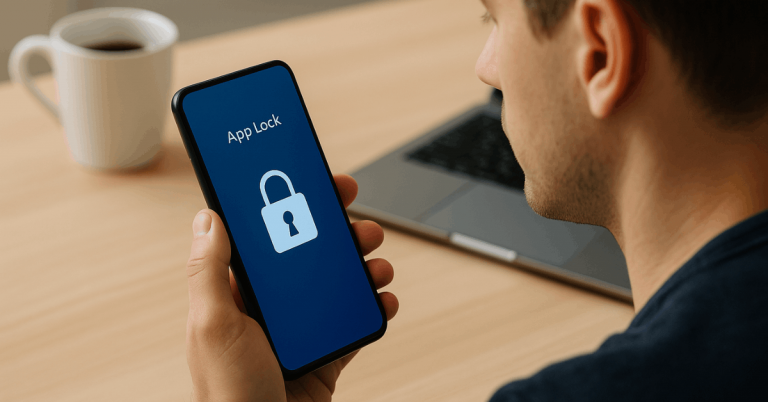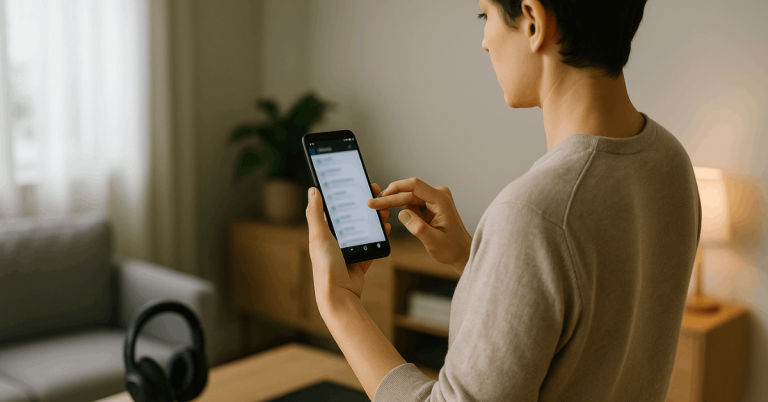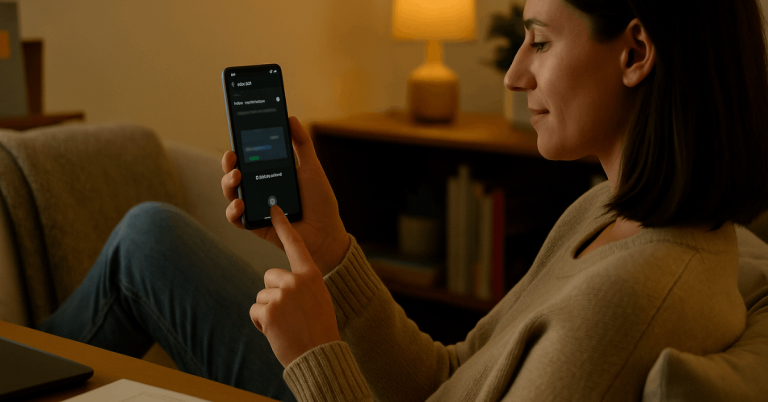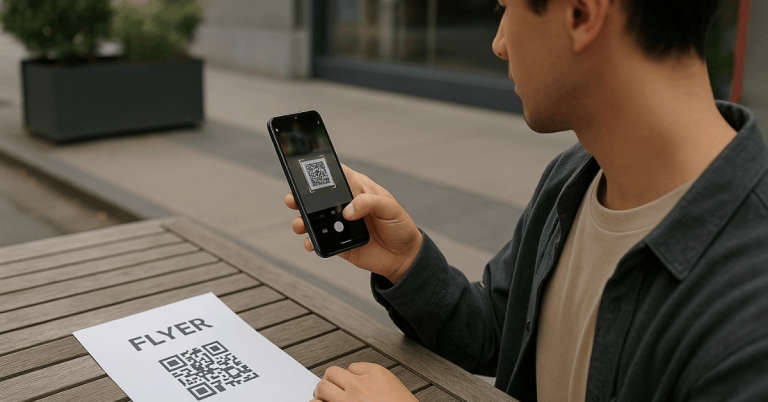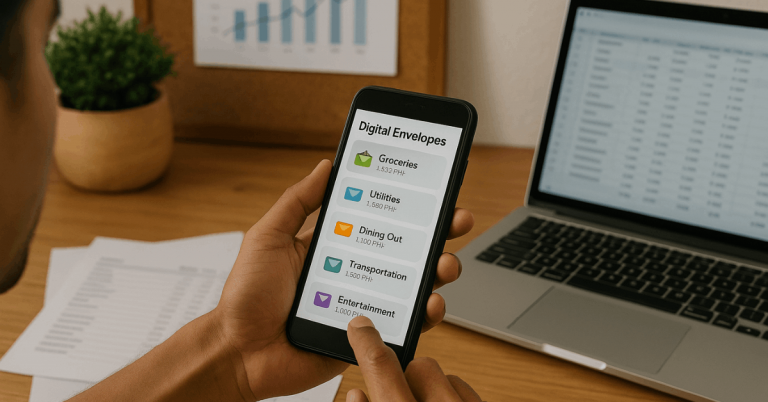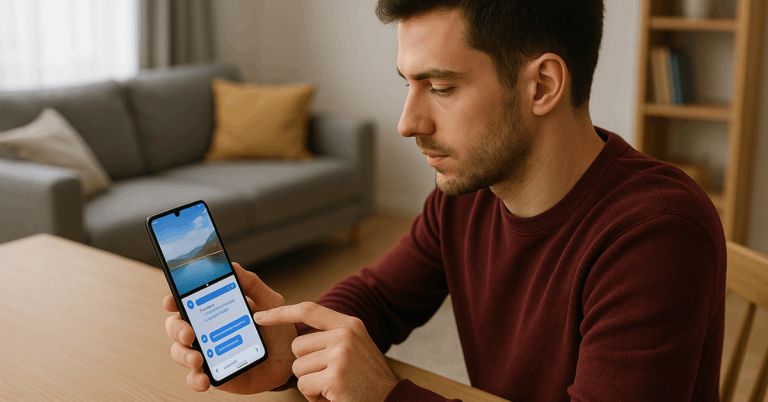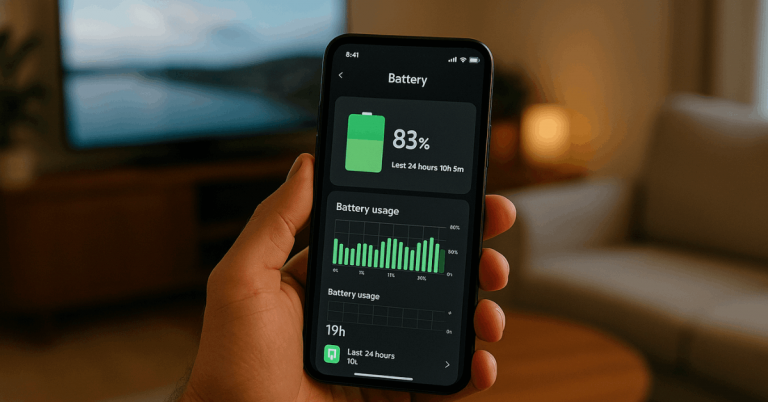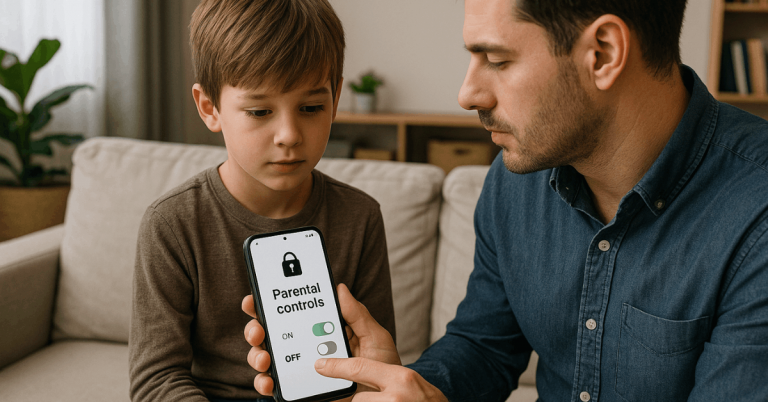Constant alerts and frictionless scrolling turn deep work into a rare event. Strong results arrive when distractions are blocked on purpose and attention is protected by design.
Set a clear plan to Use Focus Mode so important work gets uninterrupted time, while essential contacts still reach you.
What Focus Mode Is and Why It Matters
Focus Mode is a system feature on iPhone and Android that silences or filters interruptions while keeping priority items available. Apple’s Focus adds per-mode rules for people, apps, and iPhone Focus filters that narrow content inside apps.
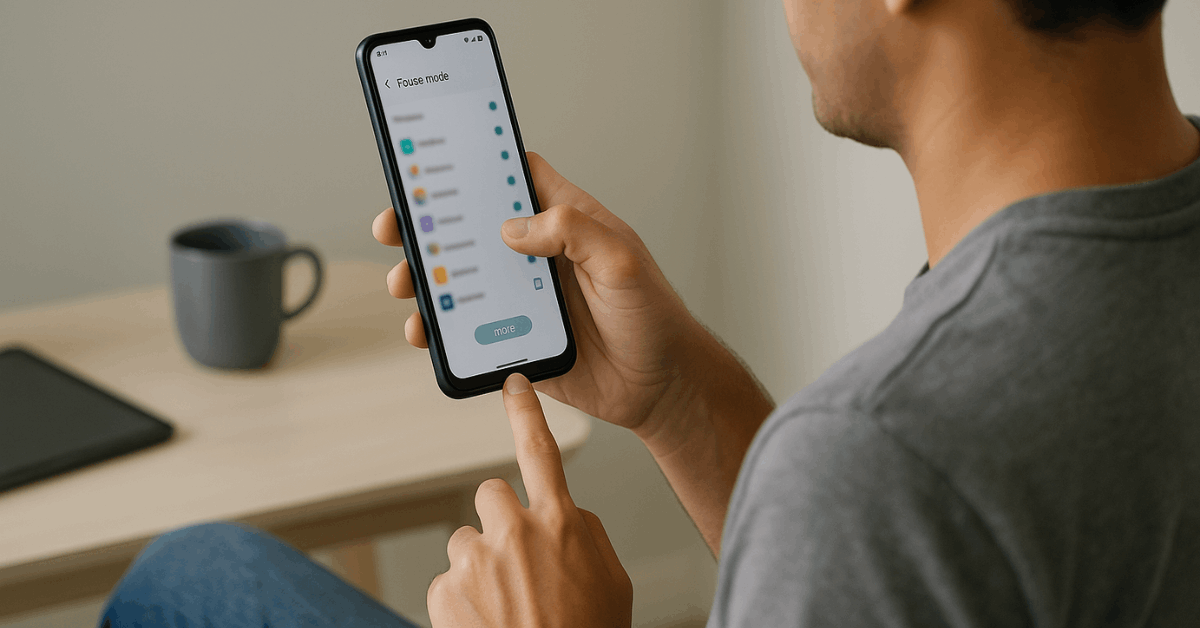
Android’s Digital Wellbeing Focus mode pauses selected apps and mutes their notifications until the session ends.
Automation options on both platforms ensure predictable, repeatable quiet blocks during work, study, or creative sprints. Apple also supports Share Across Devices, syncing the same Focus rules to iPad and Mac when enabled.
Historical Context
Knowing where the feature started helps teams standardize language. Apple’s Do Not Disturb shipped in iOS 6 back in 2012, while customizable Focus arrived with iOS 15 and later added filters that narrow app content.
Android’s Focus mode launched under Digital Wellbeing in 2019 and continues to evolve with schedule and pause controls. Sleep Focus on iPhone extends quiet time into nighttime routines with optional Wind Down..
What Research Says About Interruptions
Task switching carries real costs. Laboratory and field research from the University of California, Irvine, links interruptions to higher workload, stress, and reorientation time before resuming work.
The often-quoted “23 minutes” figure appears in many productivity summaries; however, the underlying research emphasizes disruption and stress effects rather than a universal refocus duration.
Treat that number as a practical warning, not a strict biological constant.
Apple and Android Feature Basics
Planning goes faster once the core capabilities are clear. The table below highlights how both systems handle key controls, automation, and cross-device behavior. Expect minor naming differences across versions, yet these pillars remain stable.
| Capability | iPhone (iOS 15+) | Android (Digital Wellbeing) |
| Allow specific people/apps | Allowed People & Apps per Focus | Choose apps to pause or allow |
| Automation options | Time, location, or app triggers | Manual toggle or scheduled sessions |
| Content filtering | iPhone Focus filters for Mail, Calendar, Messages, Safari | App pausing; no in-app content filters |
| Cross-device behavior | Share Across Devices to iPad/Mac | Device-specific; manage per phone/tablet |
| Setup path | Settings → Focus | Settings → Digital Wellbeing → Focus mode |
Set Up Focus on iPhone
Clear rules reduce decision fatigue during the day. The steps below create a Work Focus that mutes noise while preserving access for emergencies and urgent tasks.
Step 1 — Open Focus and pick a starting mode
Open Settings → Focus, then choose Work or create a new Focus. Name it clearly so Shortcuts and automations remain readable. Apple’s Focus arrived in iOS 15, building on Do Not Disturb introduced in iOS 6.
Step 2 — Set allowed people and apps
Allow managers, close family, and one calendar or chat app required for time-sensitive issues. Keep everything else quiet. This protects attention while preserving critical reachability.
Step 3 — Configure iPhone Focus filters
Filter Mail to a “Work” inbox, Calendar to a “Work” set, and Messages to a small “VIP” group. Filters prevent cross-contamination so work sessions do not surface personal threads.
Step 4 — Automate activation
Create a Do Not Disturb schedule or a Work Focus schedule for daily blocks, add a location trigger for the office or coworking space, and attach an app trigger for editors or IDEs. Apple lists time, location, and app as valid triggers in Focus.
Step 5 — Sync the same rules to Mac and iPad
Enable Share Across Devices so the Work Focus follows sign-ins across Apple hardware automatically.
Step 6 — Add a Sleep Focus for nights
Use the Health app to set bedtime and Sleep Focus so late alerts do not bleed into rest. Wind Down can start minutes or hours before bedtime to taper input.
Set Up Focus on Android
Android’s path centers on pausing high-distraction apps and adding schedules. Keep the setup simple initially, then tighten rules as habits improve.
Step 1 — Open Digital Wellbeing
Go to Settings → Digital Wellbeing & parental controls → Focus mode. This panel drives pausing and schedules.
Step 2 — Pick the apps to pause
Select social feeds, short-video apps, and any default “escape hatches.” When Focus is on, those apps are grayed out and their notifications stay silent.
Step 3 — Create schedules for work blocks
Schedule two or three sessions per weekday, leaving a lunch reset. The goal is predictable app blocking during work while keeping collaboration tools usable.
Step 4 — Add a Quick Settings toggle
Place Focus mode in Quick Settings for manual activation during meetings or reading sprints. Fast access makes adherence easier.
Pair Focus Mode With the Pomodoro Method
Short, timed sprints reduce fatigue and keep momentum high. Combining a Focus session with a timer produces clean start and stop boundaries that respect energy levels.
- Turn on Work Focus or Focus mode, then start a Pomodoro timer workflow.
- Work for twenty-five minutes without touching paused apps or silenced chats.
- Take a five-minute break to stretch, refill water, or glance at messages.
- Repeat for three or four cycles, then take a longer pause.
- Log two metrics: cycles completed and meaningful output produced.
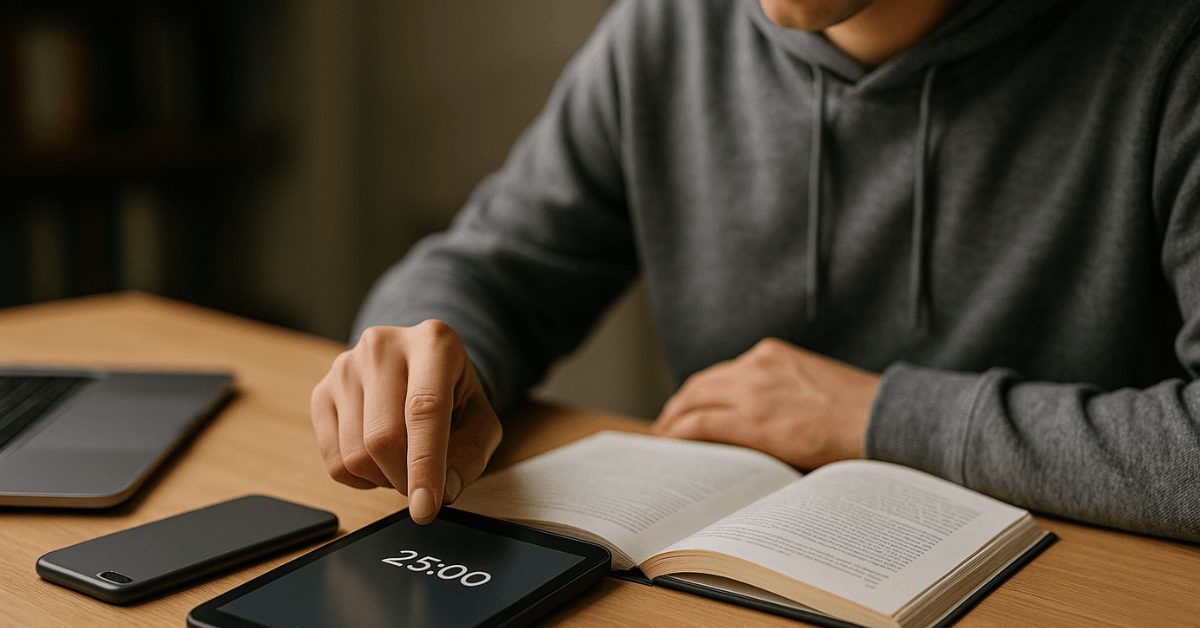
Build Sustainable Phone Boundaries That Stick
Purposeful boundaries ensure Focus is the default during important work, not an occasional fix. Strong guardrails are simple and repeatable across environments.
Reduce non-essential notifications
Audit app alerts weekly. Keep payment, delivery, two-factor codes, and calendar alerts. Downgrade marketing and social pings to badges or silence.
Create phone-free zones
Designate desks, libraries, or study rooms as quiet areas. Place the device in a drawer or another room to remove temptation.
Try a grayscale mode trick
Switching the display to grayscale reduces the pull of colorful feeds and games. Pair grayscale with a Focus schedule to reinforce the habit.
Keep critical exceptions
Whitelist emergency contacts and essential work tools. The balance to strike is quiet routine operations with intentional, limited exceptions.
Three Proven Focus Mode Presets to Copy
Preset templates speed setup and reduce tinkering. Start with clear goals, short schedules, and minimal exceptions, then evolve as needed.
Work Mode (weekdays, 8:30 a.m. to 5:00 p.m.)
Allow calls from close family and alerts from Calendar and one collaboration app. Silence everything else, including social, shopping, and news. This template mirrors common office hours where reachability matters but idle notification streams do not.
Partner Mode (various evenings and weekends)
Keep a partner or caregiver on the allowed list while silencing group chats and social feeds. This mode is ideal for workouts, reading, and errands when only one person needs priority access.
Sabbath/Offline Mode (Sundays, 7:00 a.m. to 5:00 p.m.)
Silence all contacts except a small coordination group for community or family logistics. Many communities recommend a phone-light or phone-free block to protect recovery and attention.
Limits, Workarounds, and Compliance
Focus features do not block websites on Android, and they can be toggled off at any time.
Add complementary controls if web browsing becomes the escape route: site blockers on desktop, Screen Time content limits on iPhone, or stricter Digital Wellbeing rules on Android.
Google confirms that Focus mode pauses selected apps and silences their notifications; it does not filter in-app content or websites. Apple confirms Focus automations by time, location, or app, and cross-device syncing for consistent behavior.
Conclusion
Strong boundaries create space for deep work, and Focus makes those boundaries automatic.
Start with one work preset, one personal preset, and a short automation plan that fits your day.
Keep exceptions tight, measure output, and iterate weekly. The combination of schedules, filters, and deliberate breaks will reclaim attention and reduce stress while protecting necessary communication.
